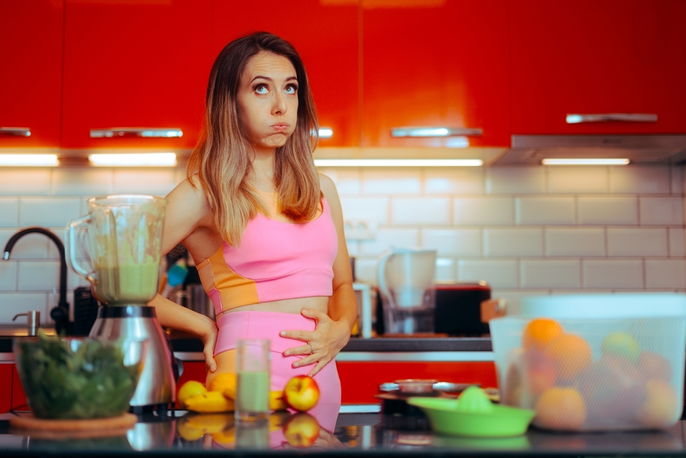Foods that are less likely to cause bloating are those that are easily digested, maintaining a healthy gut microbiome and regular bowel movements. This will reduce the amount of gasses produced in the body that can lead to abdominal pain, bloating, and general malaise.
Some common gas-producing foods include beans, broccoli, and corn. While these foods are high in fiber they are not easily digested in the intestinal tract, becoming fermented by bacteria in the gut.
It is important to point out that some foods that cause gas and bloating in one person may not have the same effect on another person. For some, beans might be the culprit, while for others dairy is the cause. Choosing foods that will combat gas and bloating will depend on the person, and diets should be individualized.

Gas-producing foods
Foods that can increase gas and bloating include:
- Beans, green peas, lentils, chickpeas (Garbanzo beans), Brussels sprouts, onion, garlic, cauliflower, cucumber, artichokes, asparagus, turnips, and oats. These foods are high in fiber and starches, like raffinose, but are not easily digested and become fermented by bacteria in the gut, increasing the production of gasses;
- Whole grains such as brown rice, oats, quinoa, and corn;
- Eggs;
- Artificial sweeteners such as sorbitol, maltitol, and xylitol;
- Certain fruits that are high in fructose, a type of sugar that is not well absorbed and produces gas. These can include fruit juices, dried fruits, and canned fruits;
- Carbonated beverages, such as sodas, sparkling wine, and seltzer water;
- Gum;
- Fried foods, like french fries and fried chicken;
- Processed meats and cold cuts
- Large meals with lots of sauce.
Dairy products, like milk, yogurt, and cheese, can also cause bloating in some people, mostly in those who are lactose intolerant. It is not necessary to eliminate dairy unless it is confirmed to be the cause of your gas and bloating.
Gluten can also produce gas in the intestines, mostly in those who have gluten intolerance or celiac disease. Foods that contain gluten include wheat, barley, and rye, as well as foods that contain these ingredients.
Also recommended: 12 Foods That Cause Gas (Eggs, Bananas, Sweet Potato & More) tuasaude.com/en/foods-that-cause-flatulenceIdentifying triggers
Because gas-producing foods will affect people in different ways, it is important to keep a food journal that includes all of the foods and drinks you consume in a day. This will help identify which foods may be causing more gas and bloating. Next you can try eliminating these foods one a time for three days to see if your symptoms improve.
It is recommended to work with a registered dietitian when performing an elimination diet in order to prevent a nutrient deficiency from eliminating certain foods.
Gas-reducing foods
In addition to avoiding foods that cause gas and bloating, you can also add foods to your diet that improve digestion and gut health, such as:
- Tomato and radicchio;
- Kefir or yogurt with probiotics (good bacteria) like Lactobacillus, which are beneficial for gut health. This recommendation is only for those who are not lactose intolerant;
- Herbal teas that contain lemongrass, ginger, and fennel can aid in digestion and the elimination of gasses due to their antispasmodic and other digestive properties. Check out more teas for bloating that you can make at home.
Other tips for the relief of gas and bloating include avoiding drinking liquids during meals, eating slowly, chewing food well, and engaging in regular physical activity. These tips can speed up digestion and improve intestinal motility, reducing the production of gasses by gut bacteria.
Meal plan
The table below contains sample meal plans to prevent gas and bloating. Avoid any foods in the meal plan that you have found actually worsen your gas and bloating.
Dietary recommendations vary according to the age, weight, level of physical activity, and current health status of each person. For this reason, it is recommended to make an appointment with a registered dietitian who can do a full evaluation of your diet and develop an individualized nutrition plan.






























